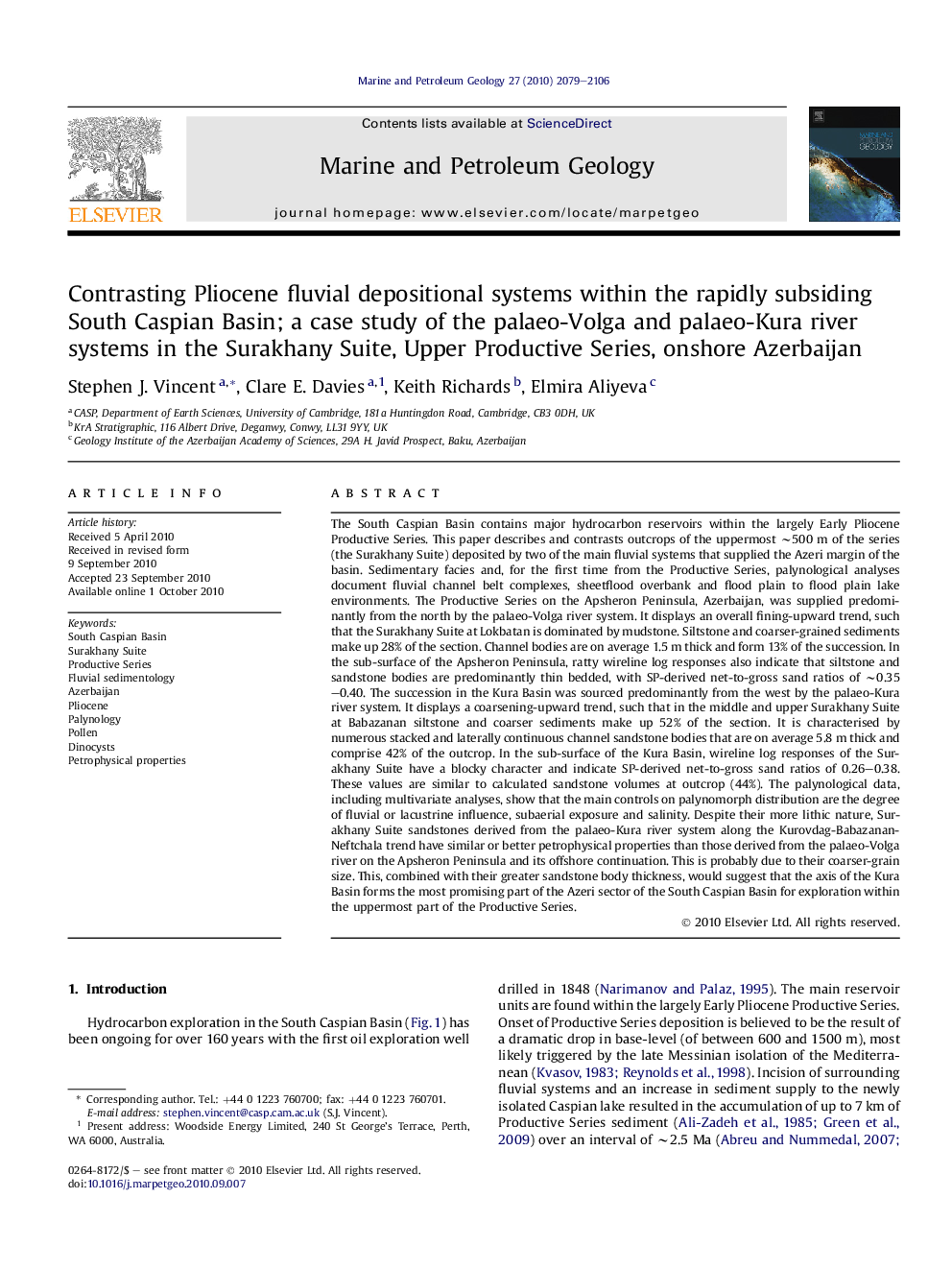| کد مقاله | کد نشریه | سال انتشار | مقاله انگلیسی | نسخه تمام متن |
|---|---|---|---|---|
| 4696397 | 1351673 | 2010 | 28 صفحه PDF | دانلود رایگان |

The South Caspian Basin contains major hydrocarbon reservoirs within the largely Early Pliocene Productive Series. This paper describes and contrasts outcrops of the uppermost ∼500 m of the series (the Surakhany Suite) deposited by two of the main fluvial systems that supplied the Azeri margin of the basin. Sedimentary facies and, for the first time from the Productive Series, palynological analyses document fluvial channel belt complexes, sheetflood overbank and flood plain to flood plain lake environments. The Productive Series on the Apsheron Peninsula, Azerbaijan, was supplied predominantly from the north by the palaeo-Volga river system. It displays an overall fining-upward trend, such that the Surakhany Suite at Lokbatan is dominated by mudstone. Siltstone and coarser-grained sediments make up 28% of the section. Channel bodies are on average 1.5 m thick and form 13% of the succession. In the sub-surface of the Apsheron Peninsula, ratty wireline log responses also indicate that siltstone and sandstone bodies are predominantly thin bedded, with SP-derived net-to-gross sand ratios of ∼0.35–0.40. The succession in the Kura Basin was sourced predominantly from the west by the palaeo-Kura river system. It displays a coarsening-upward trend, such that in the middle and upper Surakhany Suite at Babazanan siltstone and coarser sediments make up 52% of the section. It is characterised by numerous stacked and laterally continuous channel sandstone bodies that are on average 5.8 m thick and comprise 42% of the outcrop. In the sub-surface of the Kura Basin, wireline log responses of the Surakhany Suite have a blocky character and indicate SP-derived net-to-gross sand ratios of 0.26–0.38. These values are similar to calculated sandstone volumes at outcrop (44%). The palynological data, including multivariate analyses, show that the main controls on palynomorph distribution are the degree of fluvial or lacustrine influence, subaerial exposure and salinity. Despite their more lithic nature, Surakhany Suite sandstones derived from the palaeo-Kura river system along the Kurovdag-Babazanan-Neftchala trend have similar or better petrophysical properties than those derived from the palaeo-Volga river on the Apsheron Peninsula and its offshore continuation. This is probably due to their coarser-grain size. This, combined with their greater sandstone body thickness, would suggest that the axis of the Kura Basin forms the most promising part of the Azeri sector of the South Caspian Basin for exploration within the uppermost part of the Productive Series.
Journal: Marine and Petroleum Geology - Volume 27, Issue 10, December 2010, Pages 2079–2106